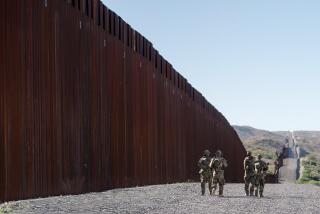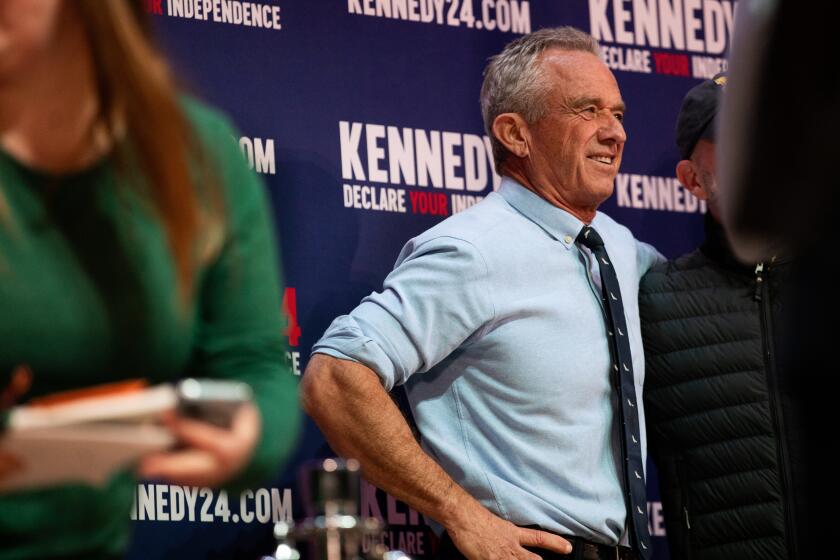An incomplete monument in El Salvador
It looms solemnly over the shady corner of a city park, an incongruous emblem of pain amid a happy clamor of picnicking families and children chasing scuffed soccer balls.
A granite echo of the Vietnam memorial in Washington, the 300-foot-long lead-colored monument serves as a kind of giant gravestone for the civil war that ripped El Salvador apart in the 1980s.
Engraved with nearly 30,000 names, the Monument to Memory and Truth is a roll of dead and disappeared from the conflict, which ended in 1992. It is incomplete. Officially, the fighting between leftist guerrillas and the right-wing military government killed 75,000 and left thousands more missing. Not all the names of the war’s victims were available when the monument project began, so the list is growing.
The monument, erected five years ago by the city’s leftist-run government, draws visitors from around the country to mourn loved ones confirmed killed in the political violence or, in many cases, who have simply vanished.
An engraved name on this glinting stone is often the closest thing to a proper grave site many people will have. The neat rows of names represent bits of history, fibers of memory, personal anguish.
“These are stories,” said 73-year-old Cipriana Rivera, a copper-skinned woman in a floral skirt and polo shirt who was scanning for the name of her husband. He disappeared in 1979 or 1980. “They are stories that happened.”
Her story, like so many from that turbulent time, has no real ending. Her husband, Tomas Candelaria, a fortysomething activist in a peasant cooperative in the rebel-friendly town of Suchitoto, went off one day and never came home.
Rivera assumes he was killed, but received no confirmation. At the time, she learned about a body that had turned up in the same area. The dead man was missing front teeth, like her husband, and scarred above the right eye, like her husband.
But Rivera never saw the body before it was reportedly buried by the army. It could have been her Tomas, she said through teeth lined in silver. Or not.
The carved names are organized by year and category: killed or disappeared. The last year listed is 1992, when the conflict ended with a peace accord that brought the rebel Farabundo Marti National Liberation Front, or FMLN, into the political mainstream, alongside its right-wing foes.
A truth commission recommended creating a monument to help Salvadoran society heal, but the idea went nowhere until a coalition of human rights groups took up the project.
It won the support of the municipal government of San Salvador, by then governed by the FMLN. The 10-foot-high monument was unveiled in December 2003, with nearly 26,000 names of men, women and children. Panels with 3,169 more names were added in March.
“It’s a place where the pains of the past can be freed,” said Carlos Henriquez Consalvi, who played a leading role in establishing the monument. “It is also a place where new generations can learn the contemporary history of El Salvador and build a culture of peace.”
But the past here is inevitably political, and many rightists would probably find the monument a biased record. All deaths, for example, are classified as “homicides.” The monument describes rights abuses and massacres against civilians, but does not mention excesses committed by rebels.
Its biggest pull appears to be personal. The monument is a favored spot during the annual Day of the Dead celebration, when scores of Salvadoran families commemorate their deceased loved ones by placing flowers and candles at the foot of the smooth stone wall.
Most other days, the visitors come in twos and threes, squinting at the tidy rows of names and running fingers over the creases. On this morning, Rivera arrived with her 30-year-old grandson, who said his father died in an army ambush in 1985.
The young man, Tomas Arevalo, was 7 at the time. He said he has three photographs of his late father, but the name engraved here -- Tomas Francisco Arevalo -- provides an equally tangible link.
Rivera would have to be satisfied with seeing the name of her son-in-law. Her husband does not appear on the list, yet.
The monument has space for more.
--
--
Special correspondent Alex Renderos contributed to this report.
More to Read
Start your day right
Sign up for Essential California for news, features and recommendations from the L.A. Times and beyond in your inbox six days a week.
You may occasionally receive promotional content from the Los Angeles Times.






